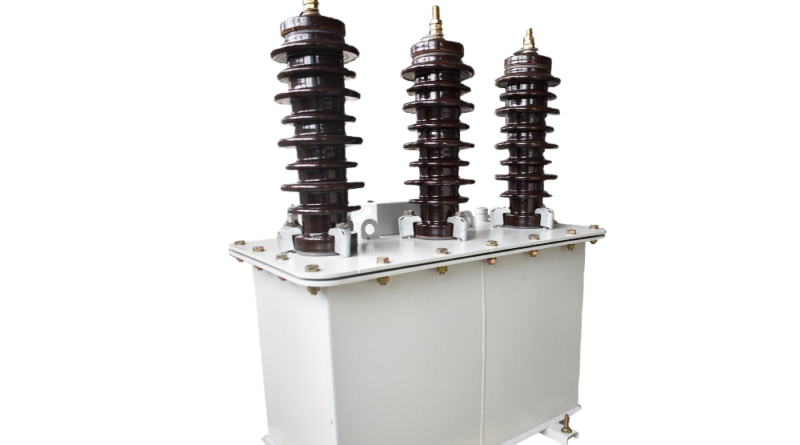Voltage Transformers: Ensuring Accurate Voltage Measurement and Control
Voltage transformers (VTs) are essential components in electrical systems that help ensure the safe and accurate measurement and control of electrical voltage. These transformers play a vital role in stepping down high voltages to levels suitable for measurement and protection equipment. This article delves into the working principle of voltage transformers, their types, functions, and applications, providing a comprehensive overview of their importance in electrical systems.
What is a Voltage Transformer?
A Voltage Transformer (VT), also known as a potential transformer (PT), is a type of transformer used to step down high voltage levels to lower, more manageable levels that can be safely measured and monitored. VTs are critical for voltage measurement, control, and protection in electrical power systems. By reducing the voltage from high-power circuits to low-voltage levels, VTs make it possible for instruments, relays, and meters to function without direct exposure to dangerous voltages.
Voltage transformers are designed to maintain a precise ratio between primary and secondary voltages, ensuring that the secondary voltage is proportional to the primary voltage in a safe, measurable range.
How Do Voltage Transformers Work?
Voltage transformers operate on the principle of electromagnetic induction, similar to current transformers but in reverse. Here’s how they work:
- Primary Side
The primary side of a VT is connected to the high-voltage power line or circuit. When electrical voltage is applied to the primary coil, it generates a magnetic field around the transformer’s core. - Induced Magnetic Field
The magnetic field produced by the primary current is captured by the core and induces a voltage in the secondary coil of the transformer. This induced voltage is proportional to the primary voltage, based on the turns ratio between the primary and secondary windings. - Step-Down Voltage
The voltage induced in the secondary coil is reduced in proportion to the turns ratio. For example, if the primary voltage is 11kV and the turns ratio is 100:1, the secondary voltage will be 110V, a much lower voltage suitable for measuring instruments or protection relays. - Secondary Voltage Measurement
The secondary voltage is then sent to measuring instruments, control systems, or protection devices. The accuracy of the VT ensures that the voltage readings are precise, enabling effective monitoring and control of electrical systems. - Burden
Just like in current transformers, the secondary side of a voltage transformer is connected to a burden, such as a voltmeter, a protection relay, or a control system. The burden must be carefully matched to the transformer to ensure accurate readings and reliable performance.
Types of Voltage Transformers
There are several types of voltage transformers, each designed for specific applications and operating conditions. Some of the most common types include:
- Core-Type Voltage Transformers
Core-type VTs are the most common design and consist of a core around which the primary and secondary windings are wound. The core is typically made of laminated steel to reduce energy losses. Core-type transformers are suitable for high-voltage applications and are used in power transmission and distribution systems. - Shell-Type Voltage Transformers
Shell-type VTs are constructed with a core that surrounds the windings, providing enhanced insulation and protection against external factors. This design is often used in systems where additional durability and reliability are required, such as in industrial power systems. - Inductive Voltage Transformers
Inductive voltage transformers are designed to measure the voltage by induction, similar to the operation of a regular transformer. These VTs are primarily used in applications where accurate voltage measurement is crucial, including metering and protection circuits. - Capacitive Voltage Transformers
Capacitive voltage transformers (CVTs) are based on the principle of capacitive coupling. They use a series of capacitors to step down high voltage. CVTs are commonly used in high-voltage transmission lines and are suitable for both measurement and protection purposes. They can be used in systems where compact size and reliability are important. - Electrostatic Voltage Transformers
Electrostatic voltage transformers operate on the principle of electrostatic induction. They are typically used in specialized applications, such as measuring voltages in high-frequency circuits or power electronics. - Combined Voltage and Current Transformers
In some applications, both voltage and current measurement are required in a single unit. Combined VTs and CTs integrate both functions into a single device, reducing the complexity and cost of the system while providing reliable measurements.
Functions of Voltage Transformers
Voltage transformers serve several essential functions in electrical systems, including:
- Voltage Measurement
The primary function of a voltage transformer is to provide accurate and safe voltage measurements. VTs step down high voltages to a level that can be safely measured by voltmeters, meters, and other monitoring equipment, allowing operators to monitor and control the voltage in power systems effectively. - System Protection
Voltage transformers play a key role in system protection. They provide the necessary voltage information for protection relays, which detect abnormal voltage conditions such as overvoltage or undervoltage and initiate protective actions, such as disconnecting the faulty circuit or activating backup systems. - Energy Metering
VTs are used in energy metering systems, particularly in high-voltage circuits, to measure the voltage across a power line. This information is used to calculate energy consumption, enabling accurate billing for electricity use in both residential and industrial settings. - Voltage Regulation
Voltage transformers are used in voltage regulation systems to maintain stable voltage levels in electrical grids. By measuring the voltage in real-time, VTs help regulate voltage fluctuations, ensuring the proper functioning of electrical equipment and preventing potential damage due to voltage spikes or drops. - Load Control
Voltage transformers provide critical data for load control systems that ensure optimal power distribution across various parts of the grid. By measuring the voltage at different points in the system, VTs help operators balance the load and prevent overloading of power lines and transformers. - Metering for Utility Companies
For utility companies, voltage transformers are essential for metering the voltage levels of electrical power delivered to consumers. VTs enable precise measurements that help in accurate billing, monitoring system performance, and ensuring compliance with regulations.
Applications of Voltage Transformers
Voltage transformers have a wide range of applications across various industries, playing an essential role in ensuring the safe and efficient operation of electrical systems. Some of the key applications include:
- Power Generation and Distribution
VTs are extensively used in power generation plants, substations, and distribution systems to monitor and control the voltage levels. They help ensure that electrical voltage is within safe operating limits for the system and allow operators to make necessary adjustments for efficient power delivery. - Industrial Power Systems
In large industrial facilities, voltage transformers are used to monitor the voltage of high-voltage equipment, such as motors, generators, and transformers. This helps prevent damage to expensive equipment and ensures the smooth operation of industrial processes. - Renewable Energy Systems
Voltage transformers are also used in renewable energy systems, such as wind and solar power plants, to measure the output voltage and ensure the integration of renewable energy sources into the electrical grid. They provide real-time data for the management and optimization of energy flow. - Substations and Transmission Lines
VTs are crucial in substations and transmission lines, where they help monitor voltage fluctuations and provide data for voltage control and regulation. They enable efficient energy transmission over long distances while maintaining safe voltage levels throughout the network. - Residential and Commercial Metering
Voltage transformers are used in residential and commercial metering systems to ensure accurate voltage readings for billing purposes. They allow utility companies to measure voltage consumption in homes and businesses, ensuring that customers are billed appropriately. - Electric Vehicles and Charging Stations
Voltage transformers are also used in electric vehicle charging stations to measure and control the voltage supplied to the vehicles. This ensures that charging is carried out safely and efficiently, protecting both the EV and the charging infrastructure.
Conclusion
Voltage transformers are indispensable components in modern electrical systems, ensuring that high-voltage circuits are accurately measured, controlled, and protected. By stepping down high voltages to safer levels, VTs enable accurate voltage readings for monitoring, control, and protection purposes. With applications spanning power generation, industrial systems, renewable energy, and more, voltage transformers help maintain the stability, efficiency, and safety of electrical networks, making them a crucial part of the infrastructure that powers our world.
4o mini




